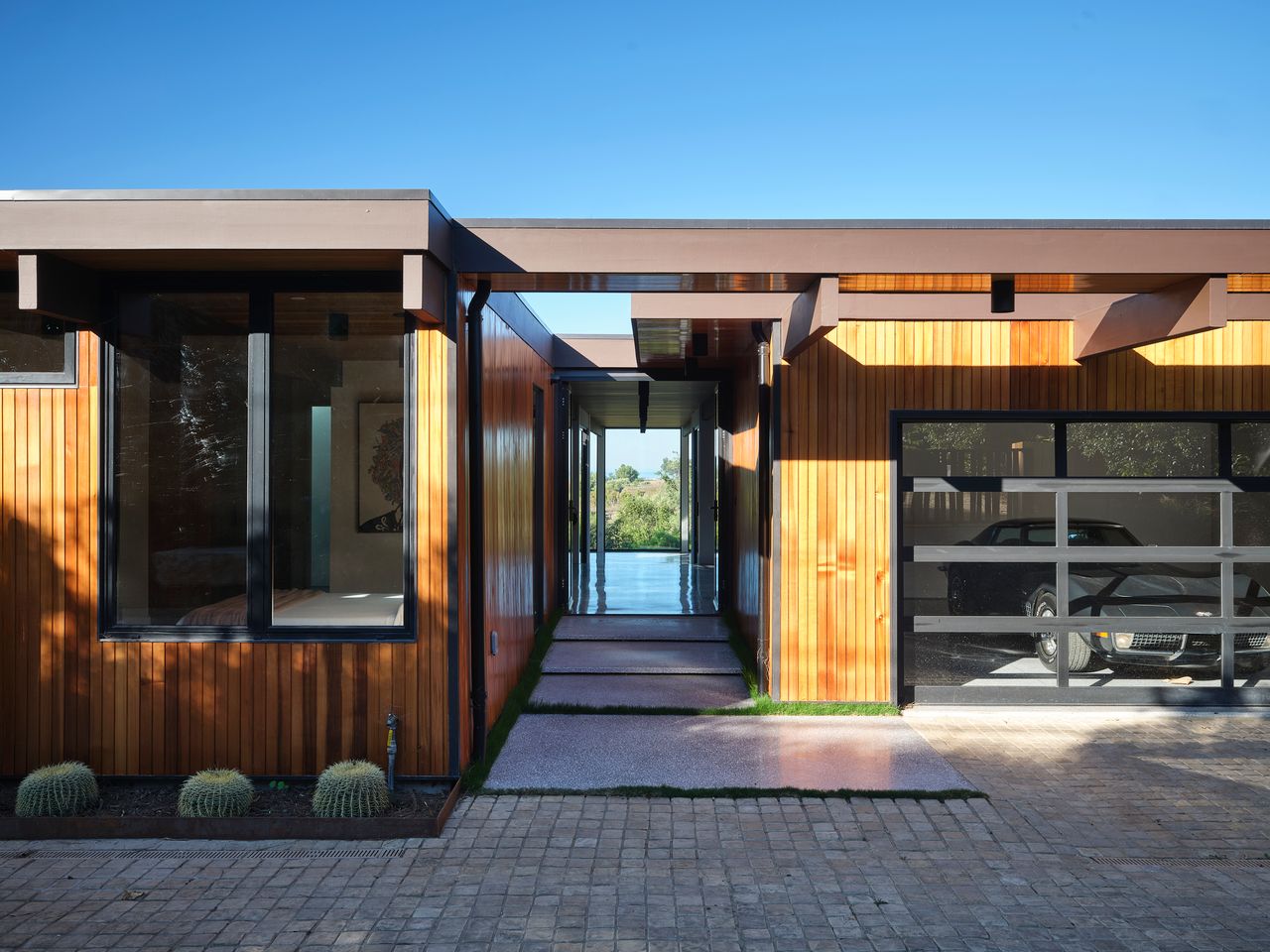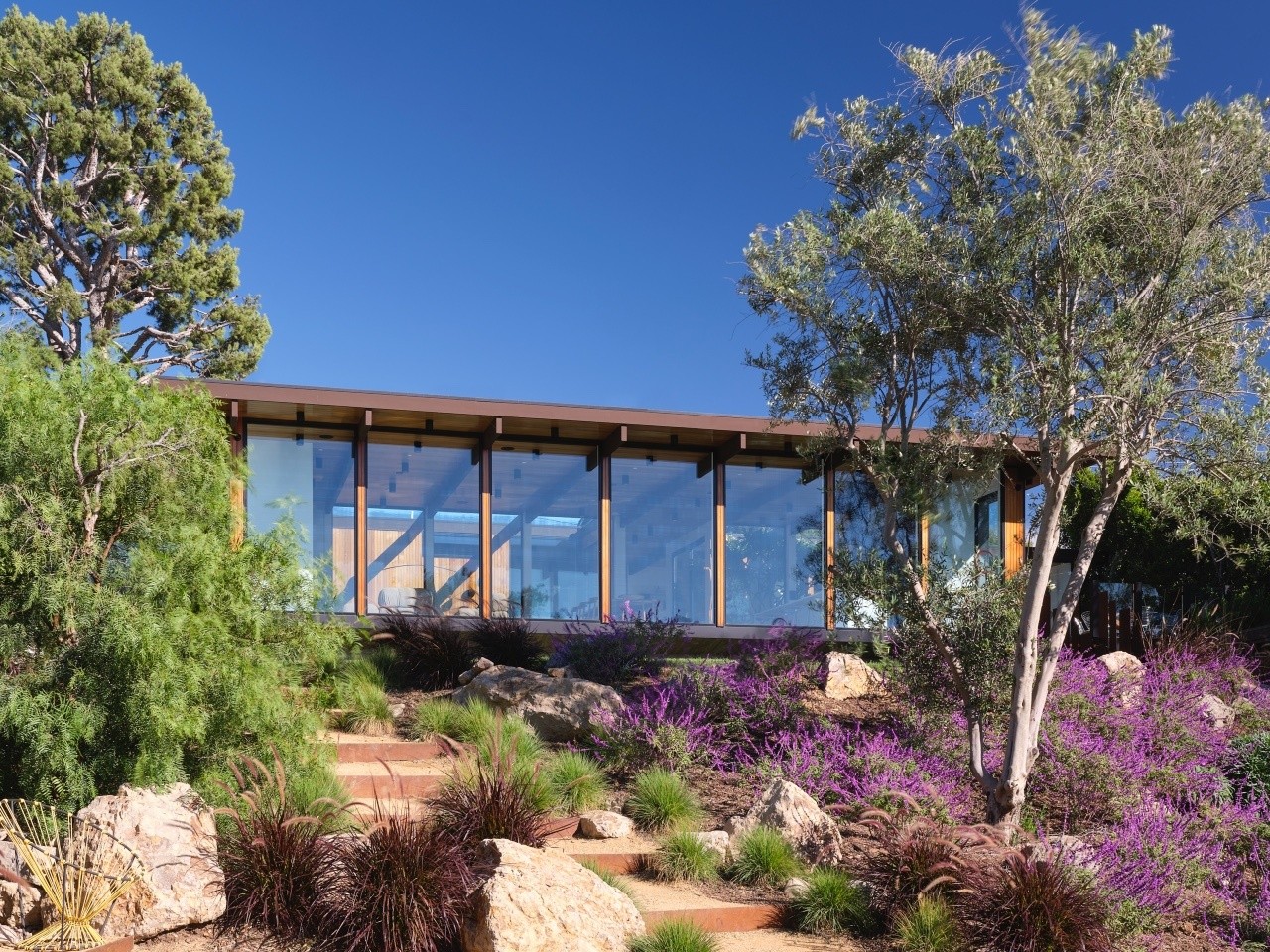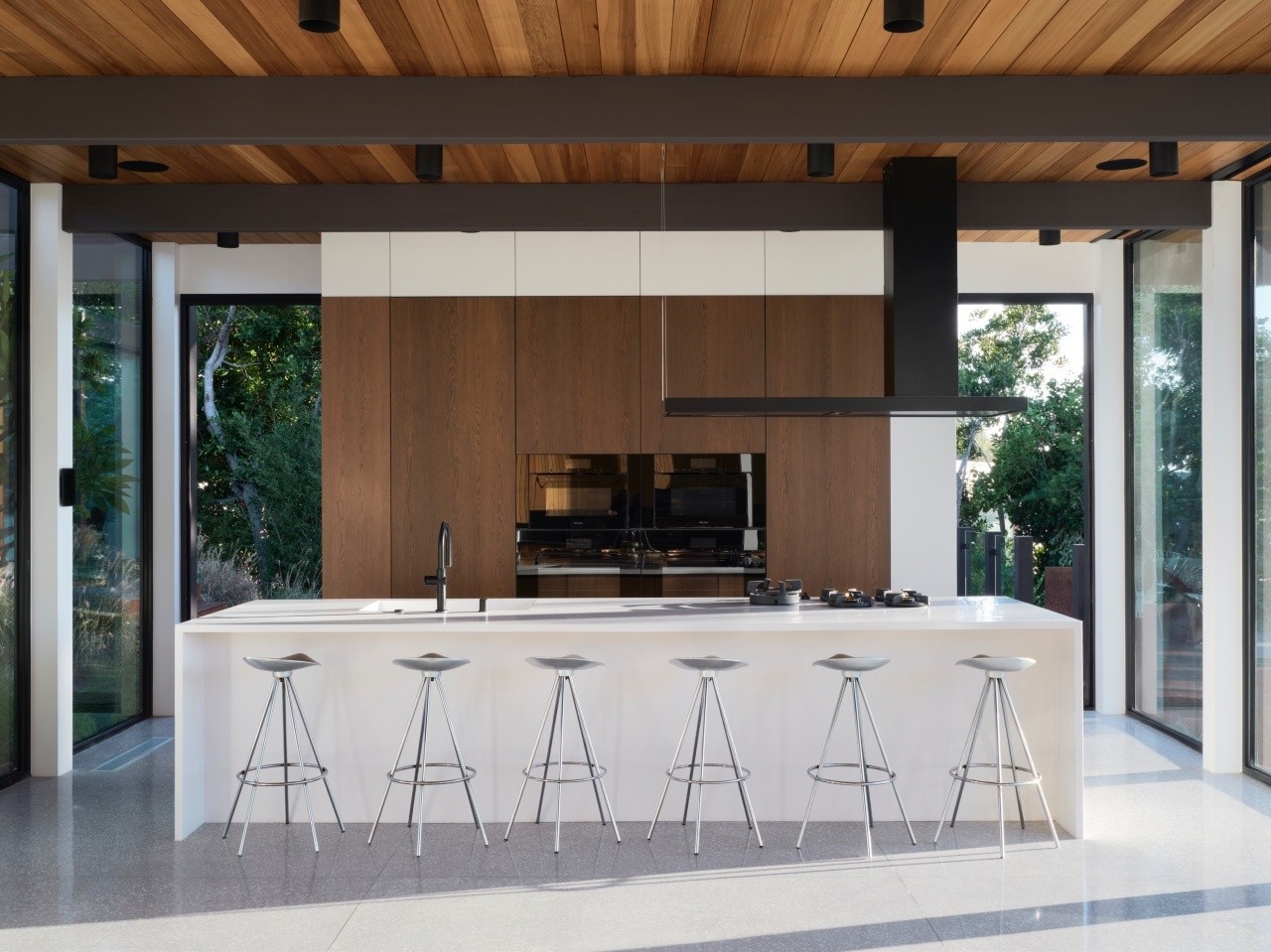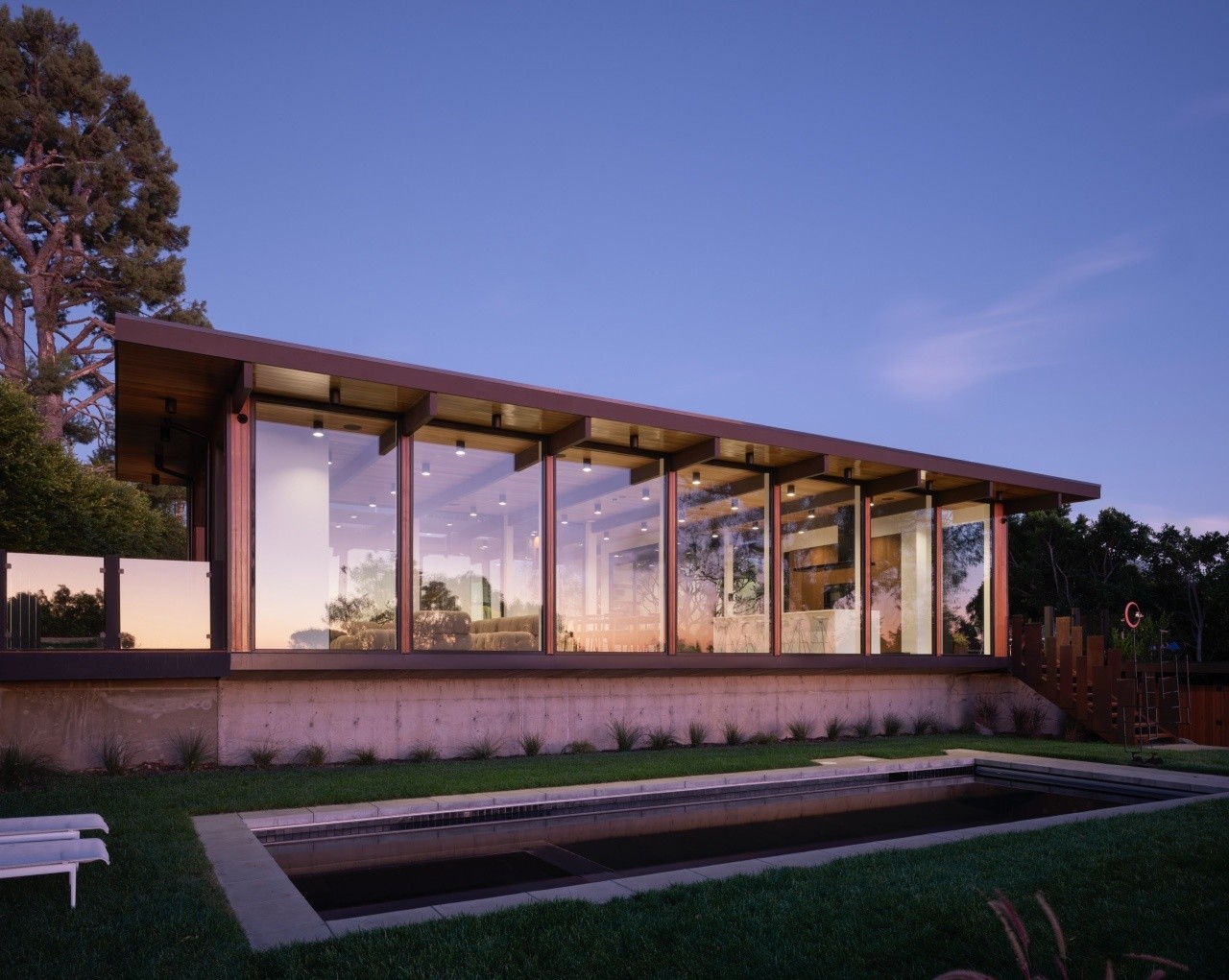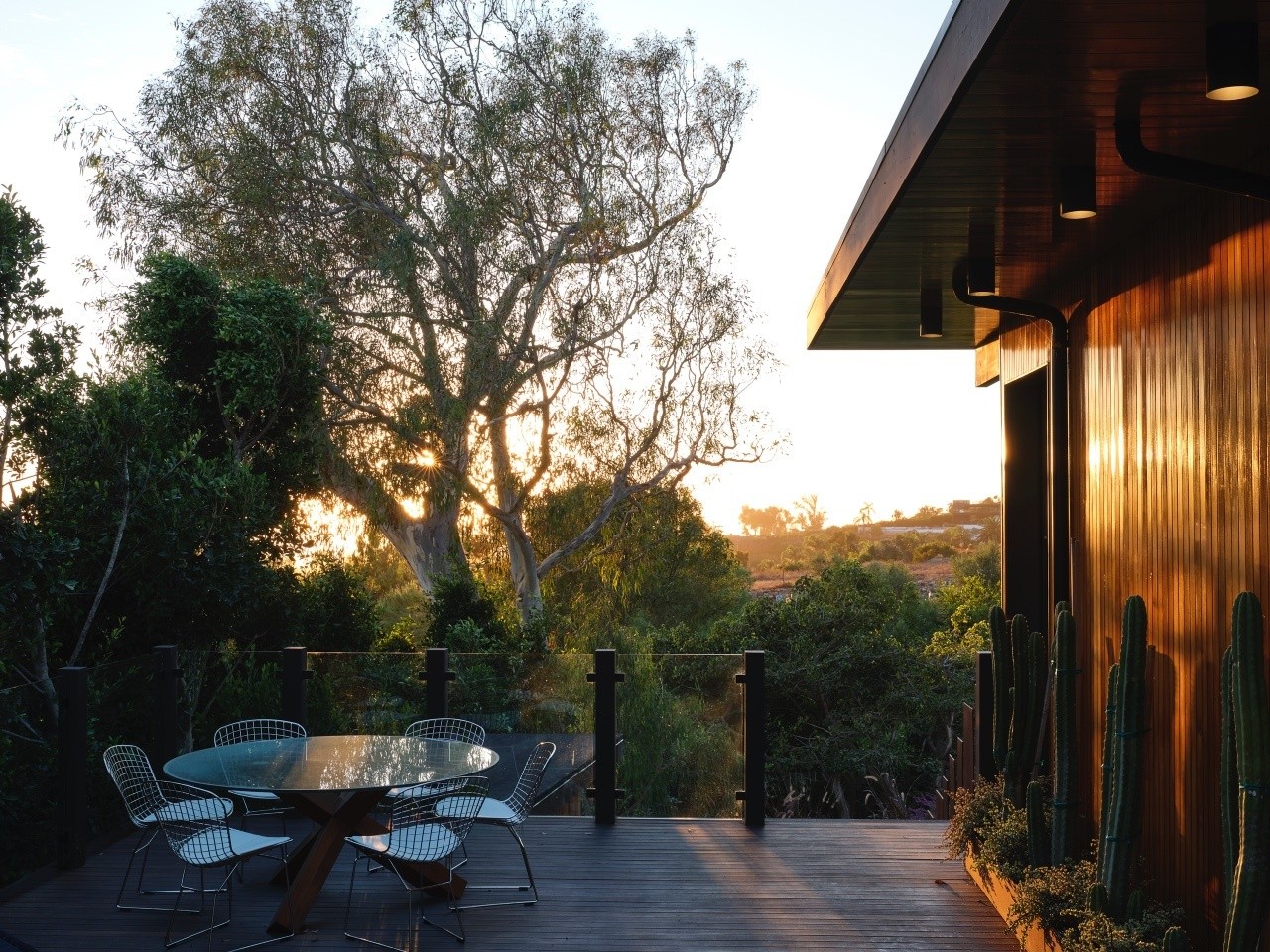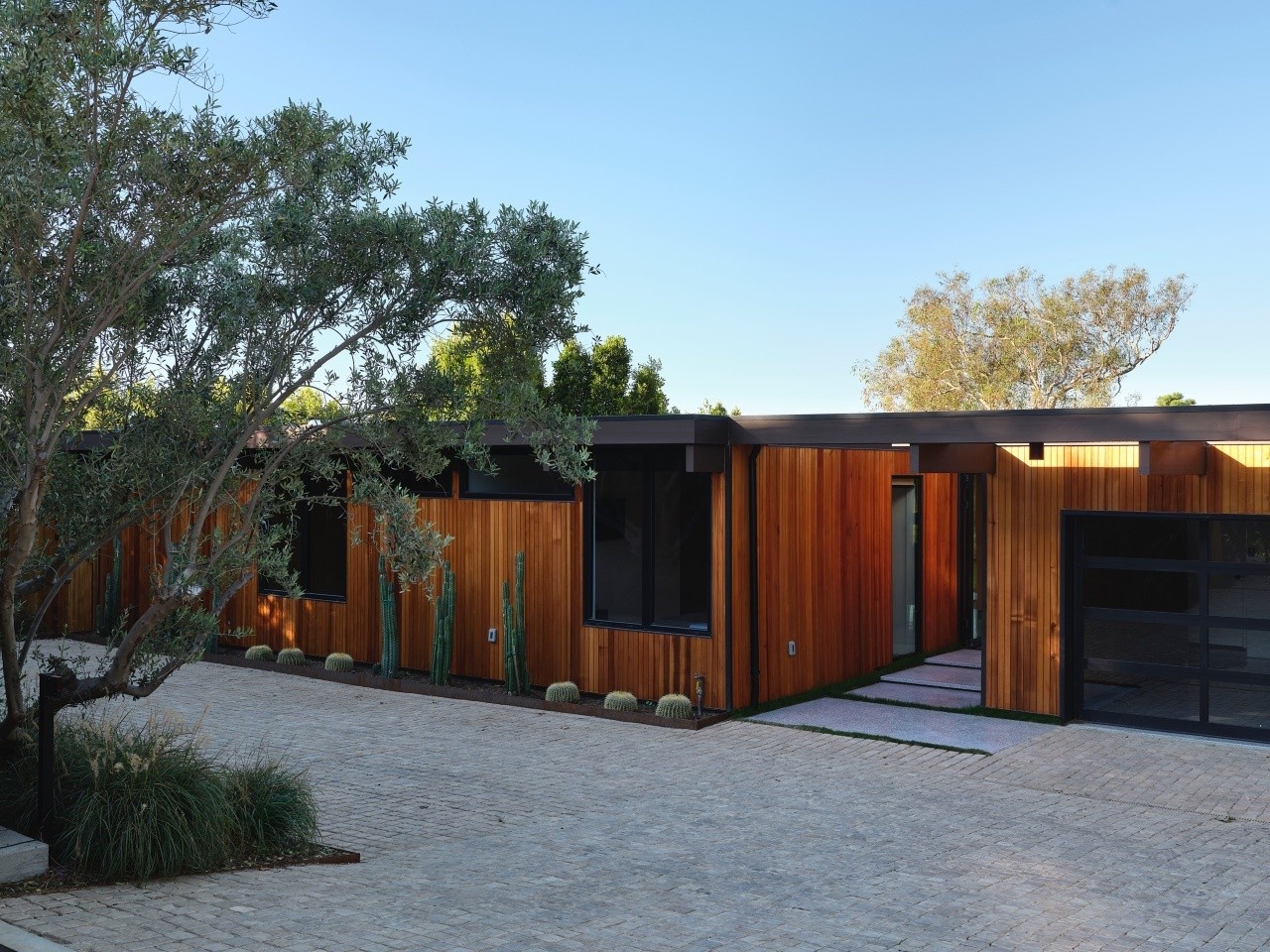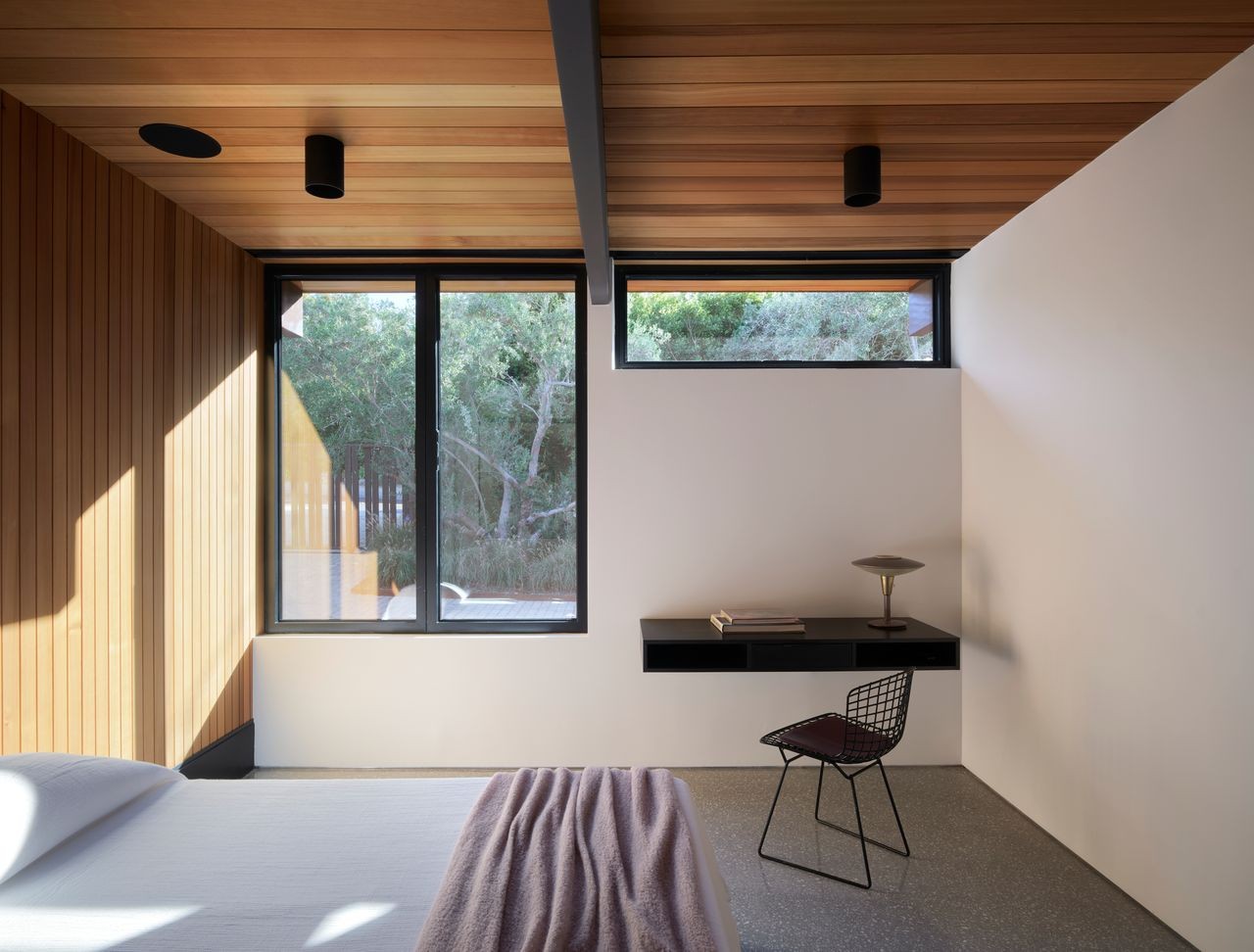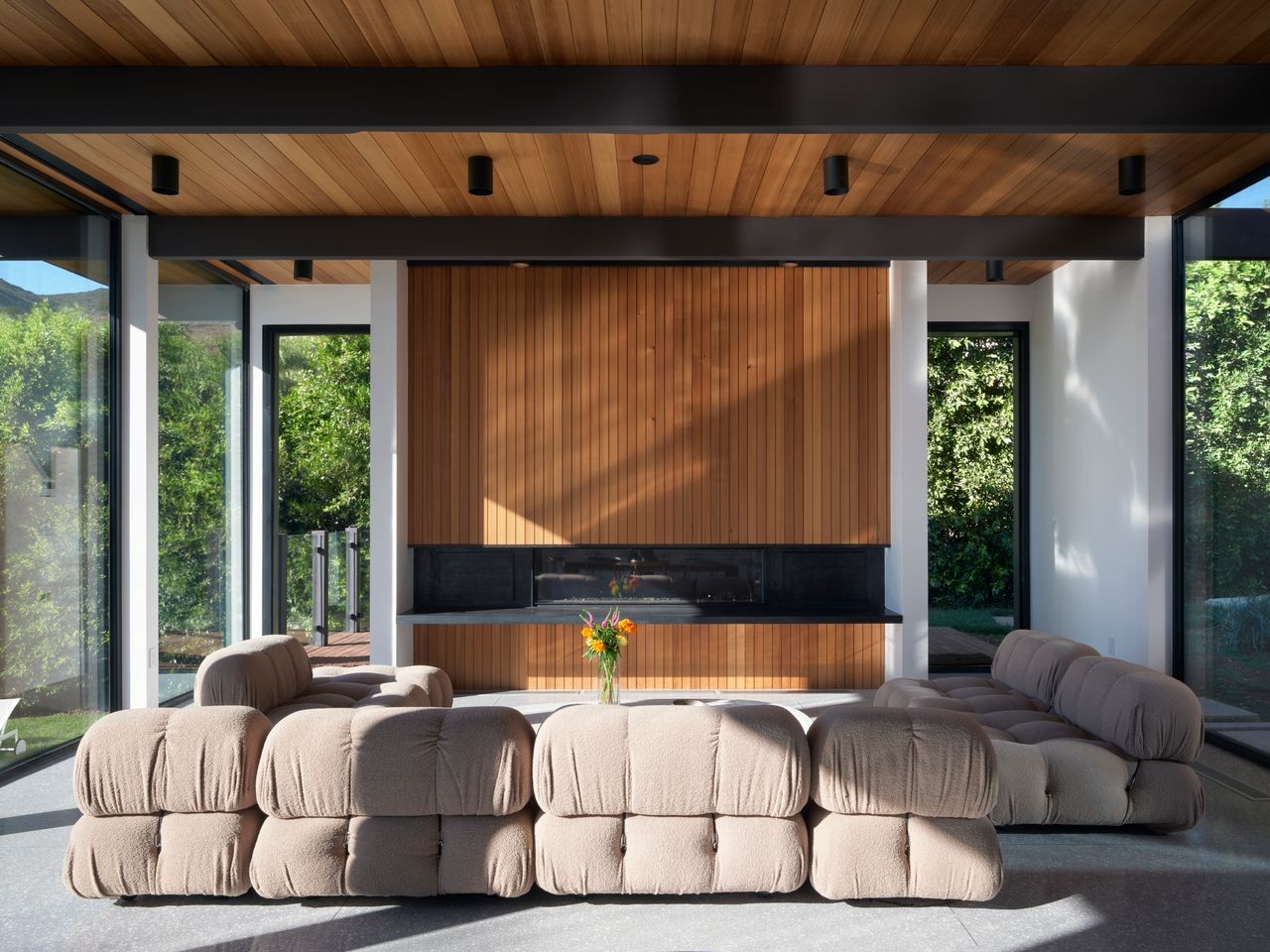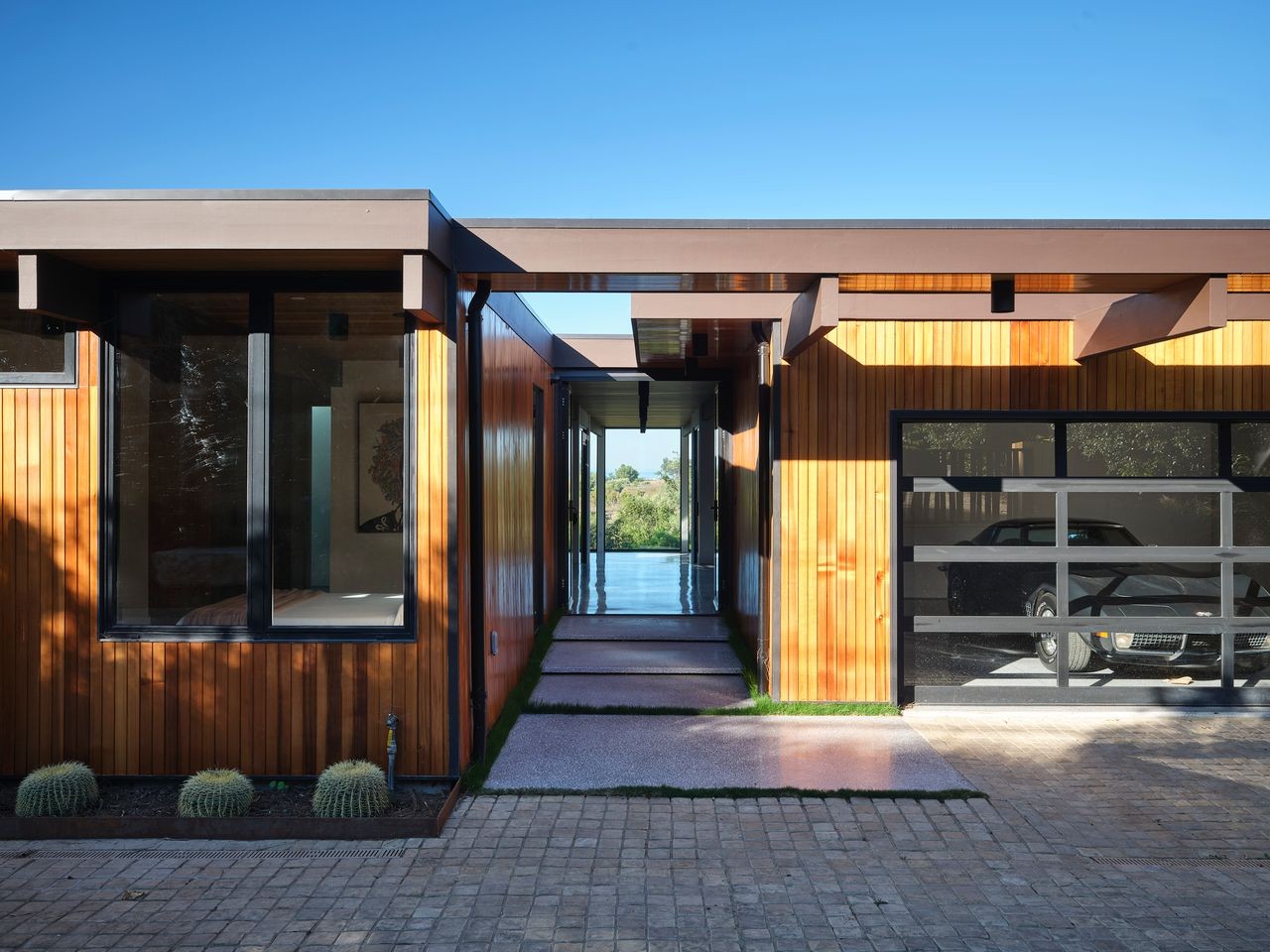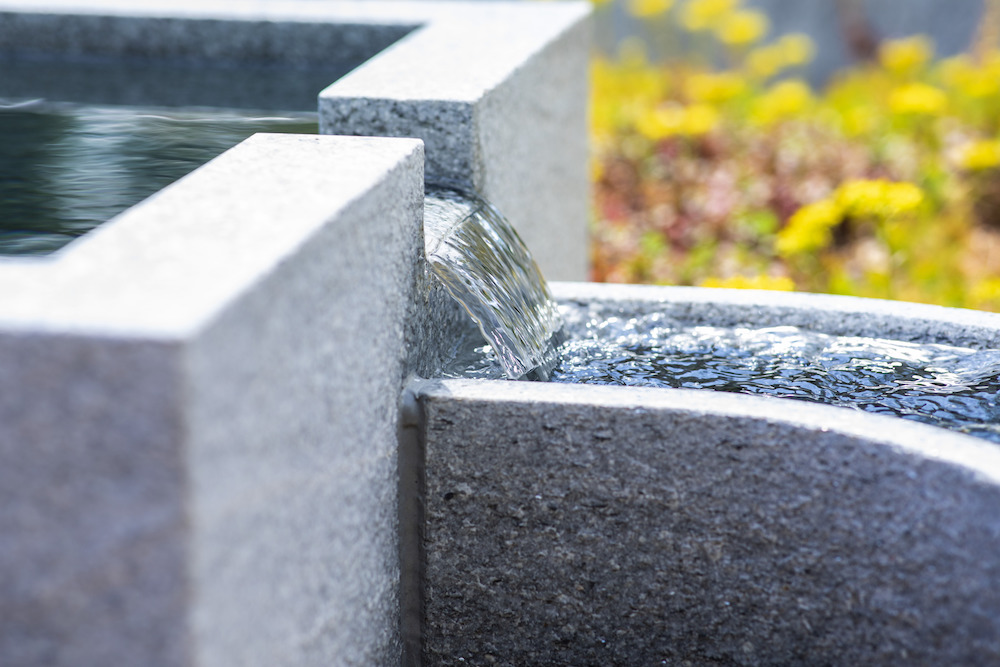After the devastating Woolsey Fire of 2018, a site in Malibu offered Klopf Architecture the opportunity to rebuild not just a home, but a new architectural composition that highlighted the property’s potential while navigating strict fire-rebuild codes. For the new Malibu Glass Box House, principal architect Geoff Campen and his team embraced a new set of limitations and translated them into an architectural asset. A+A recently interviewed him via email:
Who was the client here?
Developers Philippe Nauri and Eric Choi were looking for a midcentury modern-inspired design. They work on new homes and remodels throughout the Los Angeles area and focus on high modern mid-century modern design.
The assignment?
Without a fixed program, the design process allowed for a different kind of creative focus giving Klopf Architecture the opportunity to explore how a modernist home could best respond to this site. The team approached the project not with a list of requirements, but with a question: How might a modernist live here? What spatial qualities would inspire calm, connection, and a sense of wonder in this setting? The process became less about problem-solving and more about architectural storytelling—letting the site, the light, and the principles of modern design guide the form and flow of the home.
The response emerged in the shape of a glass-box pavilion, an open, mid-century-modern-inspired living, dining, and kitchen space that floats at the edge of the property’s natural descent. Connected to the more enclosed, private areas of the home by a glass-walled hallway, the living pavilion becomes a distinct centerpiece of the design. It opens on all four sides to the landscape with decks and patios on the flanks, an internal garden and water feature to the north, and a dramatic unguarded view of the expansive backyard and ocean horizon to the south.
The design intent?
Because of the mandated footprint, careful planning was required to ensure every space could still engage with light, landscape, or both. Strategic voids in the form of atria and courtyards allow daylight to filter deep into the home’s core, while offering moments of surprise and retreat. These design gestures allow natural light to filter deep into the interior, creating a sense of brightness and openness throughout the day. At the same time, they expand the perceptual boundaries between inside and out, making the home feel more expansive while anchoring its connection to the surrounding landscape.
For Klopf Architecture, the house stands as a compelling case study in how site, code, and circumstantial constraints can inspire enduring, modernist architecture. With years of experience reimagining mid-century modern design for how people live today, the firm took the project’s limitations as an opportunity. The result is a home shaped by open, flowing spaces, strong indoor-outdoor connections, and a calm, clear sense of structure. It’s a good reminder that even with strict constraints, there’s still room for architecture to breathe – and for modernism to keep moving forward.
How did the site drive the design?
The city’s fire-rebuild process required the new structure to remain close to the original footprint, size and bulk, constraints that ultimately clarified the architectural direction. Perched near the front of a long, narrow lot, the new home frames and overlooks a private, park-like rear expanse, an uncommon luxury especially in this part of Malibu.
Fire-resilient materials and assemblies are integrated seamlessly throughout including triple-pane glazing, under-slab and roof insulation, and locally sourced fire-treated cladding ensure the house not only meets California’s rigorous wildland-urban interface (WUI) standards but feels effortlessly aligned with them. While technical decisions like fire-hardening and mechanical systems presented some construction challenges, particularly around the cantilevered glass box, the team found a functional compromise that preserved the integrity of the design.
The material palette?
Entering, you first pass through enclosed private spaces before crossing a glass-walled connector that announces the transition: the living, dining, and kitchen pavilion opens on all sides to nature. The steady daylight reflected off polished terrazzo floors, filters in through adjacent atriums, filling the deep plan with a luminous glow. Walls of cedar-clad glazing dissolve the boundary to the outdoors—deck, garden, water feature, and view all feel like extensions of the living space.
A custom, hand-poured continuous terrazzo sweeps across floors, walls, integrated sinks, and even the bathtub—creating a monolithic, tactile canvas that underpins the minimalist aesthetic and feels natural. Warm cedar ceilings and siding wrap continuously from indoors to patios, softening the structure while anchoring it in nature. Large sliding walls of glass and dark anodized frame systems invite light and views while maintaining clean structural clarity.
Ultimately the palette is very simple and intended to be natural and complementary to the bolder palette of the surrounding light and foliage.
Scale and proportion.
Walking through the Malibu Glass Box House is like moving through a fluid intersection of interior and exterior — where light, landscape, and living seamlessly unfold.
Inside, a restrained palette and exposed post and beam design celebrate the ethos of mid-century modernism. A central circulation spine extends from the entry to the rear glass wall, offering a continuous visual link from street to ocean. Spaces such as the library and office, though more intimate in scale, are never cut off from nature as each opens to its own unique courtyard or garden view.
As the site slopes down, the scale and size of the house steps down with it, ultimately keeping the low profile and humble feeling that often permeates mid-century design.
How does it complement what’s around it?
The siting of the house is what gives it its unique character. Rather than receding into the backyard like the neighboring homes, the house holds a slight prominence. From the central living pavilion, stepping down into the landscape feels more like entering a secluded park where a separate existing accessory structure, trail, and recreational areas await. The home’s modest street presence gives way to this unfolding drama of space, view, and nature.
Though born out of a strict regulatory framework and developed without a specific client, the rebuild design unfolded with remarkable clarity. Grounded in site logic, refined by limitations and an emphasis on timeless spatial relationships – light, proportion, and a strong connection to nature, the resulting design feels both effortless and uplifting. The home lives lightly on the land, opens generously to its surroundings, and strikes a careful balance between privacy, openness, and calm.
For more, go here.

